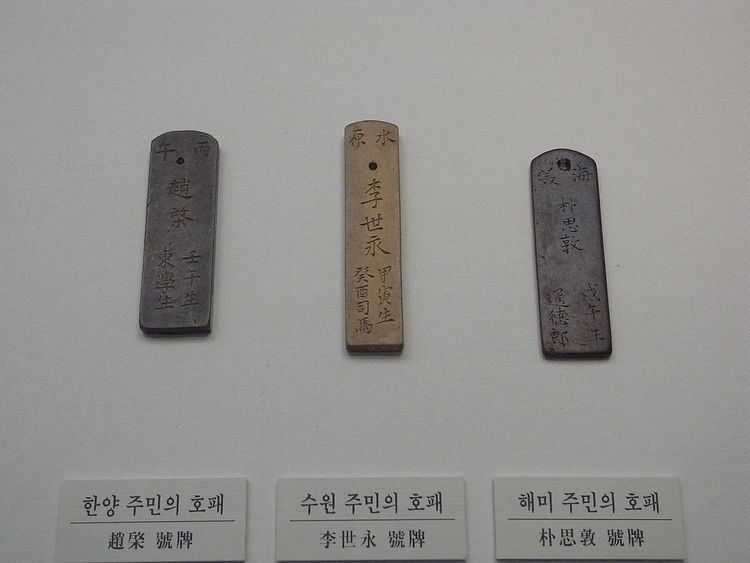Hangul 호패 Revised Romanization Hopae | Hanja 號牌/戶牌 McCune–Reischauer Hop'ae | |
 | ||
Hopae were identification tags carried by Koreans during the Joseon dynasty, recording the bearer's name, place of birth, status and residence.
History
The hopae system was initiated by King Taejong in 1413, apparently on the basis of a similar practise by the Yuan dynasty in China. Taejong declared that hopae must be carried by all males aged 16 and older. The desire to control migration was cited as a major reason behind the system in the edict which established the hopae law. However, it was abandoned only three years later in 1416, after the completion of the new household registry; this may have been because the hopae were no longer necessary after the completion of the registry, or the opposition which commoners demonstrated to the requirement of carrying hopae. The hopae system was promulgated and abolished several times in the following years.
King Sejo revived the system in 1458, again with the aim of controlling the movement of people, this time in order to aid in suppressing the rebellion by Yi Jing-ok in Hamgil Province, which found widespread support among peasants who had fled from their homes; the law would remain in effect for twelve more years.
Hopae again fell into disuse, but were revived by Prince Gwanghae in the early 17th century. One game played with dominoes in modern Korea takes its name from the hopae.
